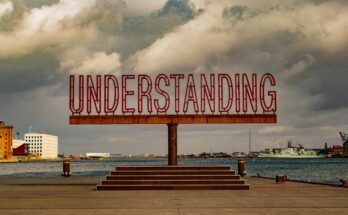Introduction
With the new year right around the corner, many Hoosiers will be shopping for auto insurance quotes to ensure their coverage needs are met in 2024. Securing affordable yet comprehensive car insurance could appear difficult with so many factors to consider.
What Types of Auto Insurance are Required in Indiana?
Indiana is a fault state requiring all vehicle owners to maintain minimum liability insurance. This gives you financial coverage in the event of an accident for which you are at fault. The state mandates the following three types of liability coverage:
- Physical Injury Liability: Covers medical bills for people injured in an accident you cause, up to the policy limit purchased. Indiana’s minimum required limit is $25,000 per person/$50,000 per accident.
- Property Damage Liability: Covers repairs/replacement costs for property damaged in an accident you cause, up to the policy limit purchased. Indiana’s minimum property damage liability limit is $25,000.
- Uninsured/Underinsured Motorist Coverage: Compensates you if you are injured in an accident caused by a driver who either lacks insurance or has insufficient insurance to fully cover your damages. This is optional in Indiana but highly recommended.
In addition to these mandatory liability coverages, insurance providers in Indiana commonly offer the following optional coverage types to provide extra protection for you and your vehicle:
- Collision Coverage: Repairs your vehicle if you’re in an accident, regardless of who is at fault. Pays out up to your vehicle’s value minus deductible.
- Comprehensive Coverage: Covers issues like fire, theft, vandalism, flooding and more. It also pays up to your vehicle’s value minus deductible.
- Medical Payments Coverage: Covers medical bills for occupants in your vehicle after an accident up to the specified limit. Pays regardless of fault.
With a basic understanding of coverage requirements and options, let’s dive into comparing auto insurance quotes and rates for Indiana drivers.
Factors that Impact Your Auto Insurance Quote
Many elements go into determining your individual auto insurance premium. Examining how each impacts rates will help you understand quote variations. The top factors insurance companies review include:
Driving Record
Your history of accidents, speeding tickets, or other violations has a major impact on rates. Clean driving for several years typically qualifies for discounts. A DUI or at-fault accident will lead to higher premiums that decrease over time as your record improves.
Credit-Based Insurance Score
Insurers believe how you manage credit can predict how you manage risks. Strong credit often equals lower rates, while poor credit means paying more. This controversial factor affects over 90% of U.S. policies.
Vehicle Use
How you plan to use your vehicle matters – commuting to work alone incurs less risk than a road trip teen. Personal use tends to be cheaper than business use with higher mileage.
Marital Status
Statistics show married drivers get into fewer crashes, so they receive lower rates. Single and divorced motorists typically pay more than their partnered counterparts.
Gender
Unfortunately, gender still plays a role, with men usually paying higher premiums than women of the same age. This difference narrows as both parties age.
Residence Characteristics
Where you park overnight influences rates. Urban areas with more traffic see higher insurance claim costs compared to small towns or rural regions.
Deductible Amount
Opting for a high deductible (e.g., $1,000) rather than a low one (e.g., $250) earns a substantial discount since you assume more financial responsibility for losses.
Vehicle Details
Newer vehicles with modern safety features cost less to insure than older models. Luxury vehicles also mean pricier premiums. Mileage, garage parking, anti-theft devices, and more affect prices too.
Policy Discounts
Bundling auto with homeowners/renters policies, multi-vehicle discounts, good student status, and safety courses can trim your rates significantly. Always ask insurers about available ways to save.
Carefully examining your personal profile within each category allows targeting the cheapest possible quotes. Now that the rate factors are clear, it’s time to start comparing Indiana auto insurance options.
How to Gather Indiana Auto Insurance Quotes
The first step is gathering rates from multiple providers so you can identify the most affordable coverage blend for your circumstances. Today, this process starts online:
Compare Quotes on Insurer Websites
All major carriers like State Farm, GEICO, Progressive, Farmers, and Liberty Mutual allow getting bindable quotes via their websites. Simply input your details to receive instant rates.
Use Quote Aggregator Services
Websites like QuoteWizard, TheZebra, and Insurify let you simultaneously request quotes from dozens of insurers with a single form. This saves enormous time versus filling out multi-company applications individually.
Contact Local Independent Agents
Many towns have insurance agencies offering policies from numerous carriers. Stop by an office, give them your information, and they can generate quotes on the spot as well. Independent representation provides customized guidance too.
Get quotes monthly, as rates are constantly changing based on the factors above. A policy that costs $1,200 this month might drop to $900 next month if you get a good driver discount or take a safety class. Always compare at renewal as well to avoid overpaying as you become a lower-risk customer.
With multiple rate estimates in hand, it’s time to thoroughly analyze each Indiana auto insurance proposal. Check coverage details, compare premiums, and ask agents questions to identify the optimal combination of price and protection.
Evaluating and Choosing an Auto Insurance Policy
Now that quotes are gathered, a side-by-side examination is essential before selecting any Indiana auto insurance plan:
- Verify mandatory liability minimums are met, and higher optional limits match your needs/budget
- Scrutinize policy language clarifying exactly what is and isn’t covered in various loss scenarios
- Determine if preferred doctors/shops are in-network for lower medical payments and collision repair bills
- Consider bundling to capture multi-policy discounts from the same carrier
- Assess customer service reputation – who provides fastest claims payouts?
- Check for discounts not captured in initial quotes after explaining full driving/vehicle profile
- Be wary of unusually low quotes as they may have gaps, exclusions, or eventual rate hikes
- Negotiate deductible reductions for safety course graduates or claim-free years
Buy only from financially stable insurers with high ratings from AM Best or similar agencies. Request policy sample wordings, too, before committing. Overall, choose the plan representing the best mix of upfront cost and long-term reliability.
Maintaining Low Rates After Purchasing a Policy
Once coverage is bound, remain a low-risk customer to keep premiums declining annually. Follow these tips:
- Never drive impaired or without a license. Speeding tickets are rate killers too.
- Continuously improve your credit score over time for additional insurance savings.
- Select higher deductibles if the financial situation allows, gaining more discounts.
- Consider usage-based “pay per mile” policies for light drivers seeing lower mileage charges.
- Constantly check for new missed discounts by updating your info every 6 months.
- Take a safe driving course every 3-5 years, as most provide premium reductions.
- Ask about safety devices like alarms and avoid filing small at-fault claims.
- Explore rising liability limits over years that cost little but provide greater protection.
Keep a perfect driving record and make diligent payments on time to keep maximizing Indiana auto insurance affordability year after year. Complacency can allow rates to gradually creep back up.
Frequently Asked Questions about Indiana Auto Insurance
Here are answers to some commonly asked questions:
Can I get an Indiana auto insurance quote without a vehicle?
Yes, many companies provide quotes based on your profile alone. Just be aware actual rates may differ slightly once a VIN is associated.
What happens if I let my insurance lapse?
Driving without insurance is illegal, and tickets can be issued if pulled over. Lapsed coverage also makes reinstatement much costlier and might be denied altogether depending on how long it was void.
How does my insurance handle an accident with an uninsured motorist?
That’s where uninsured/underinsured motorist coverage becomes valuable. This portion of the policy would pay for your injuries/damages instead of the at-fault uninsured driver’s liability limits being applied.
Can I get Indiana auto insurance with a DUI on my record?
Yes, but DUIs significantly raise rates for 3-5 years. Taking a defensive driving course may help some. The length of time high-risk surcharges apply depends on individual circumstances like BAC level and prior violations. Coverage is still possible, just expect premium increases.
What information do I need to provide for an Indiana auto insurance quote?
Common details insurers require include your name, address, driver’s license number, date of birth, vehicle make/model/year, how the vehicle will be used, and your driving history details. Having this information handy makes the quoting process smooth and quick.



